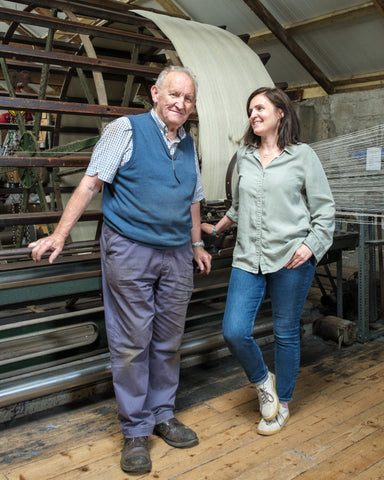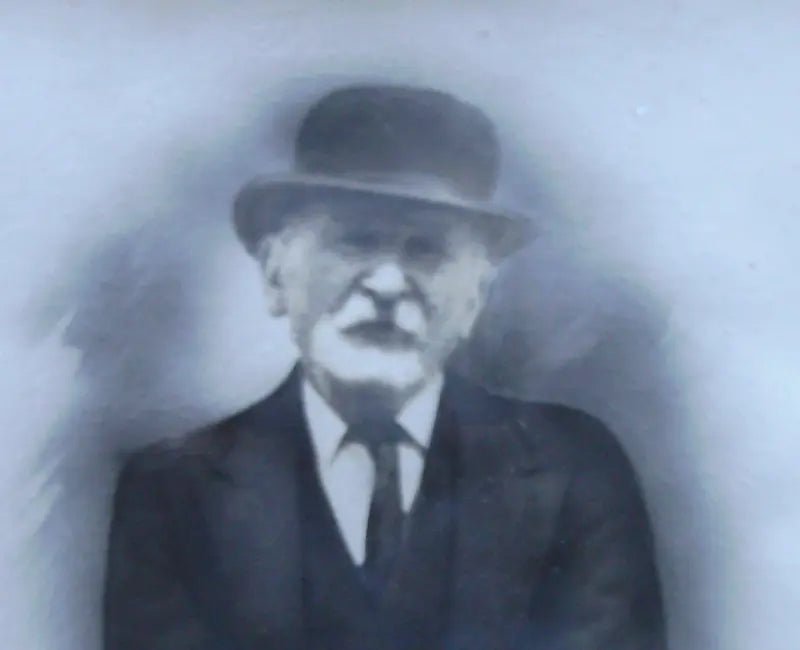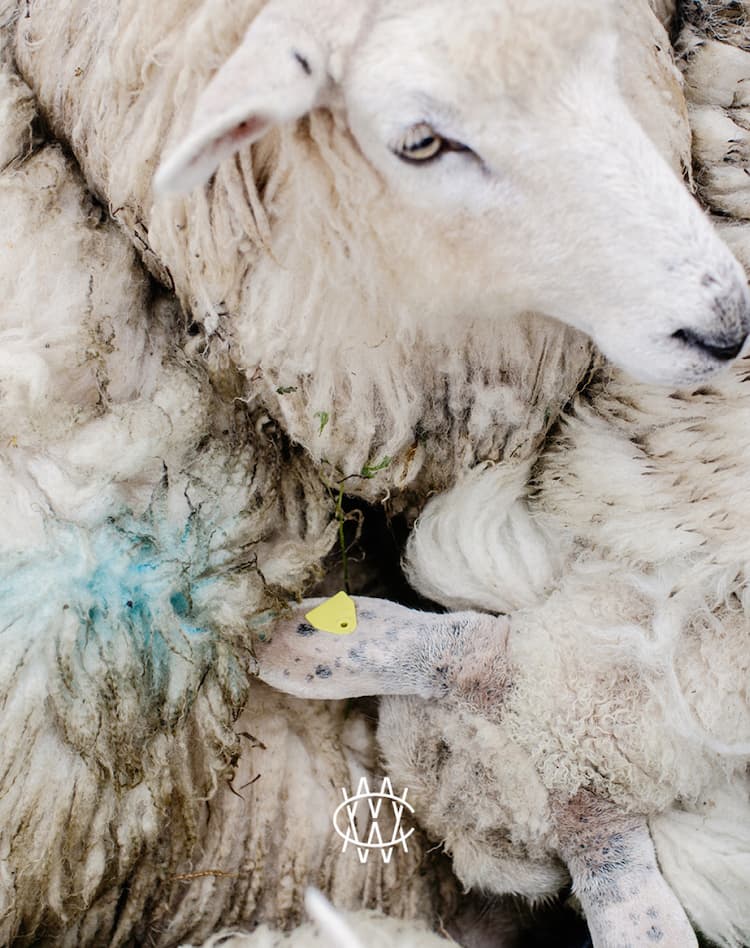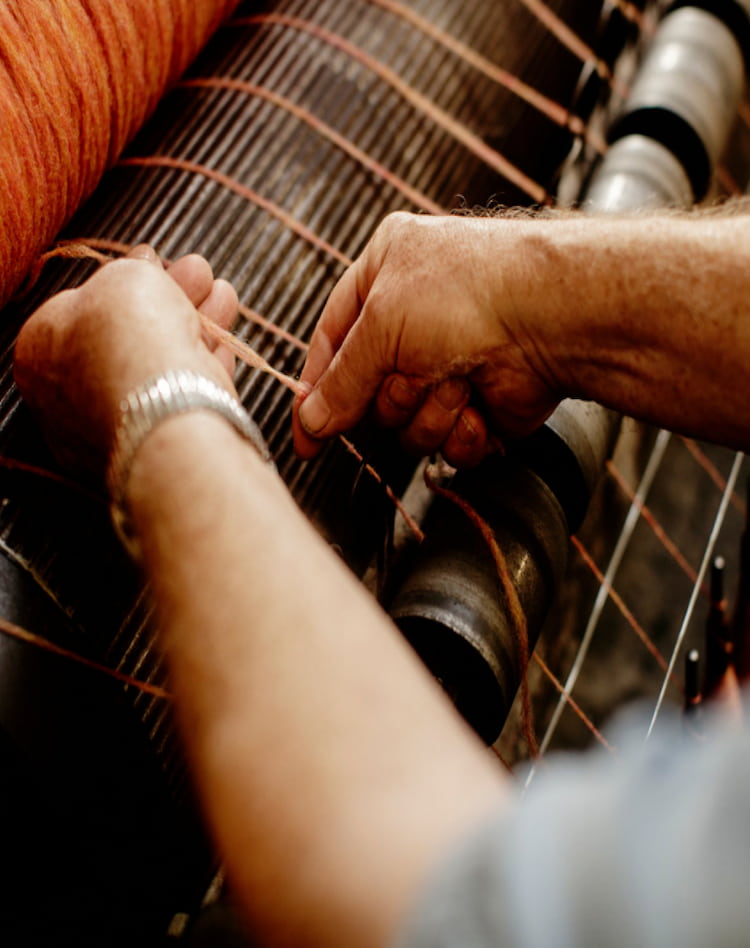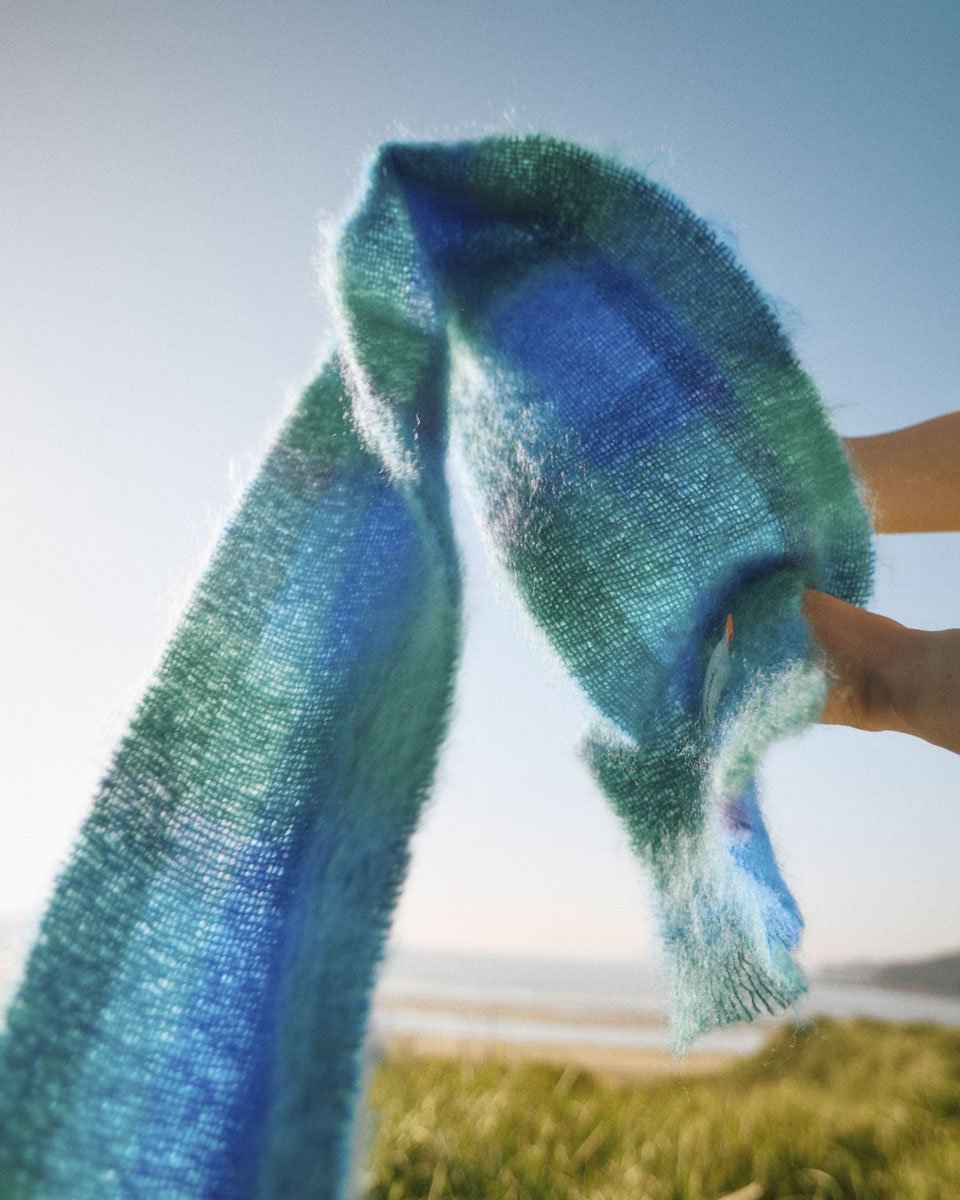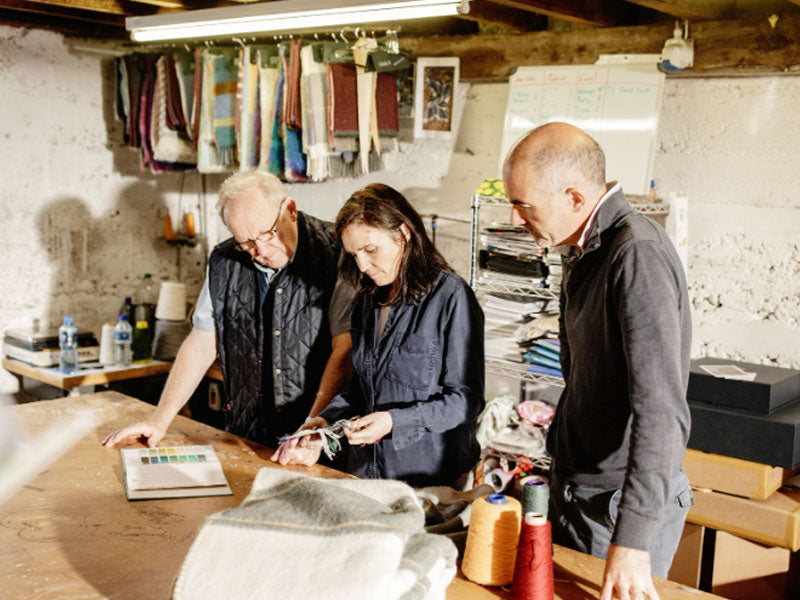Six generations of the Cushen family have devoted themselves to crafting superior quality textiles in the small town of Graignamanagh. However, anyone coming through our shop will understand that the story does not begin there… beginning with Cistercian monks in 1204, this woollen mill is a window into to past 800 years of Ireland’s history. We are so proud of our heritage and we want to share it with you.
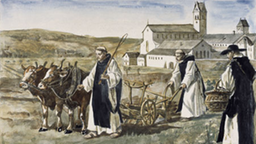
13th Century
In the year 1204, the Anglo-Norman knight William Marshall (1146-1219) founded Duiske Abbey in Graiguenamanagh, Gráig na Manach in Irish, meaning Village of the Monks. This was perhaps the finest of the medieval Cistercian monastery in Ireland at that time. Much of the abbey was constructed using cream limestone brought across the Irish Sea from quarries at Dundry, outside Bristol. The abbey itself derives its name from the Duiske river which in Irish, Dubh Uisce, means Black Water. The river is so named because the clarity of its water shows up the healthy black patina on the stones of the riverbed.
Graiguenamanagh has long association with wool and textiles, in fact, this location was strategically chosen for its strong water supply to power mills, pure and soft water for washing yarn, fertile land for raising sheep and an advantageous access via the river Barrow to the sea for trade. The wool produced here was gathered and exported to the great textile centres across Europe such as Flanders and Luca in Northern Italy.
16th – 18th Century
The monks remained in Graiguenamanagh until the 16th century, establishing a very successful wool and textile centre at their Abbey settlement. In 1536 however, under Henry VII, all monasteries and abbeys were supressed and closed. The last monk, Charles O’Kavanagh, left Graiguenamanagh in around 1539. The knowledge of spinning and weaving was so well established here after 300 years of Cistercian influence that and the Abbey mills, a valuable site, remained open and continued to process local wool into yarns and textiles. Around this time also there was an influx of Flemish weavers into the area and with this came the arrival of the first ancestors of todays patrons, the Cushen family.
18th Century
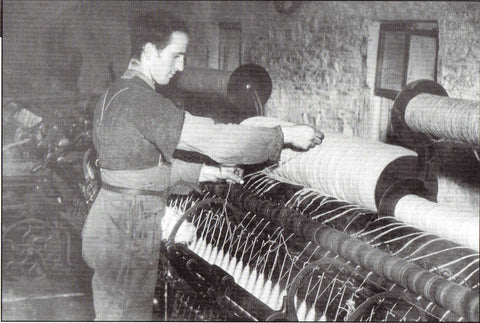
The first written record of the Cushen family is found in the 18th century. Sylvester Cushon was born in 1778 in Graiguenamanagh and passed his trade on to his son Patrick who, in 1841 at the age of 17, confirmed his occupation as a Blanket Manufacturer on the historic Morpeth Roll. The Morpeth Roll was a gift presented to Lord Viscount Morpeth when he left his post as Chief Secretary for Ireland. Incredibly, the manuscript measured over 420 meters in length and contained over 160,000 signatories from all across Ireland, including nobility, gentry, clergy, merchants, and traders.
In the late 1800’s the family rented a mill in the nearby village of St Mullins where Patrick’s son Philip produced yarn to be woven by his brother, Bernard, in Graignamanagh.
In 1916 Philip’s oldest son Patrick availed of a scholarship to study textile manufacturing in a Scottish textile college. Nine years later in 1925 Philip purchased the current mill buildings which were part of the original monastic mills which dated from 1204. He also formally established “Cushendale” as a trading name and used this name to label his blankets. He continued to run the mill with his two sons Patrick and Bernard up until his death in the early 1940’s.
The mill was then managed by Philip’s son Patrick Cushen and the main products were woollen blankets, travel rugs and knitting yarns.
1940s to today
During WWII there was high demand for blankets and the production at the mill was almost exclusively for these. After the war the mill survived the economic downturn which followed, while many of the surrounding mills were forced to close.
In 1963, the government of Ireland established the first national design centre of excellence in Kilkenny, and what followed can only be described as a revolution in Irish craft design. Patrick’s son Philip was now running the mill and collaboration with Kilkenny Design Workshops in 1960’s gave a more contemporary direction to production with emphasis on design, colour & new fibres, the three pillars of our collections today.
Today Miriam works side by side with Philip to carry the business on for the 6th generation.
